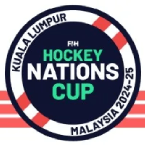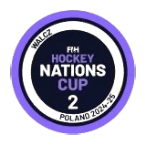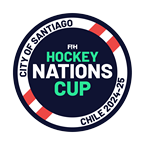
The Hockey Museum at Woking in England is home to hundreds of hockey-related artefacts, from early equipment, match programmes and uniforms, through to art-work, early match videos and thousands of pin badges from events and teams across the globe.
As part of their drive to raise the profile of hockey and bring attention to its long and distinguished history as both an Olympic sport and a sport that crosses many cultures, the Hockey Museum staff are in the process of developing a ‘Hockey in 50 Objects” archive on the website www.hockeymuseum.net.
This collection of objects will range from sticks and balls through to more inanimate objects such as rule changes or the introduction of artificial pitches. The idea is to chart the key moments in the development of the game through objects, images or illustrations.
Here are a few of the 50 items that have made it onto the collection so far:
A gold medal from the 1908 Olympics, the first time hockey appeared as an Olympic sport. It has since appeared at every Games except 1924. However, this is only true of men’s hockey. Women’s hockey made its entrance onto the Olympic arena in 1980 and has appeared every year since.
The development of hockey sticks over time is represented by five main types of hockey stick within the collection. These are: a hedgerow stick; an English head stick; an Indian head stick; a composite stick and a metal stick. The shape of the hockey stick has changed dramatically over time, adapting to meet the demands of the game.
Another area of equipment that has changed to meet the demands of the game and the development of new lightweight materials is goalkeeping kit. Until the 1980s goalkeepers used to wear just cricket pads and leather gloves, with no helmet and little additional protection.
Compare that to today’s protective equipment where, although the goalkeepers might be clad from head to toe in pads, kickers, chest protectors, elbow and arm protectors and helmets – the equipment is so light that the keepers can still move with speed and agility.
One ‘item’ due to appear in the list soon which would have caused some confusion among players, even 10 years ago, is the Argentinian backhand shot, otherwise known as the ‘tomahawk’.
This shot would not have been recognised by the previous generation of players, but is now one of the commonest methods of shooting at goal. The tomahawk shot flies off the reverse side of the player and is a great way of lifting the ball at goal, at high speed.
One of the real game-changers in hockey was the introduction of artificial pitches in the 1970s. Until that moment, hockey was always played on grass. While some grass pitches were smooth as bowling greens this was not always the case.
With the advent of artificial pitches, players could develop skills without the fear of losing control due to a tuft of grass, mud or a deep stick imprint. Of all the objects identified as crucial to hockey’s development, for many people, artificial turf is one of the most important developments in the game. To see just how far hockey turf has come, find out more about the International Hockey Federation's Quality Programme for Hockey Turf.
To see the list of articles and objects posted so far visit: www.hockeymuseum.net























